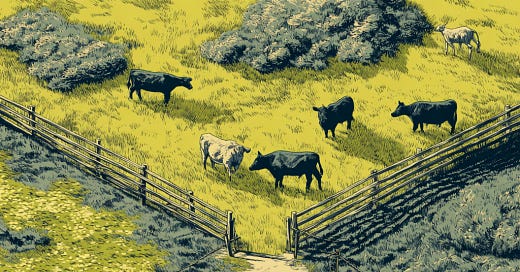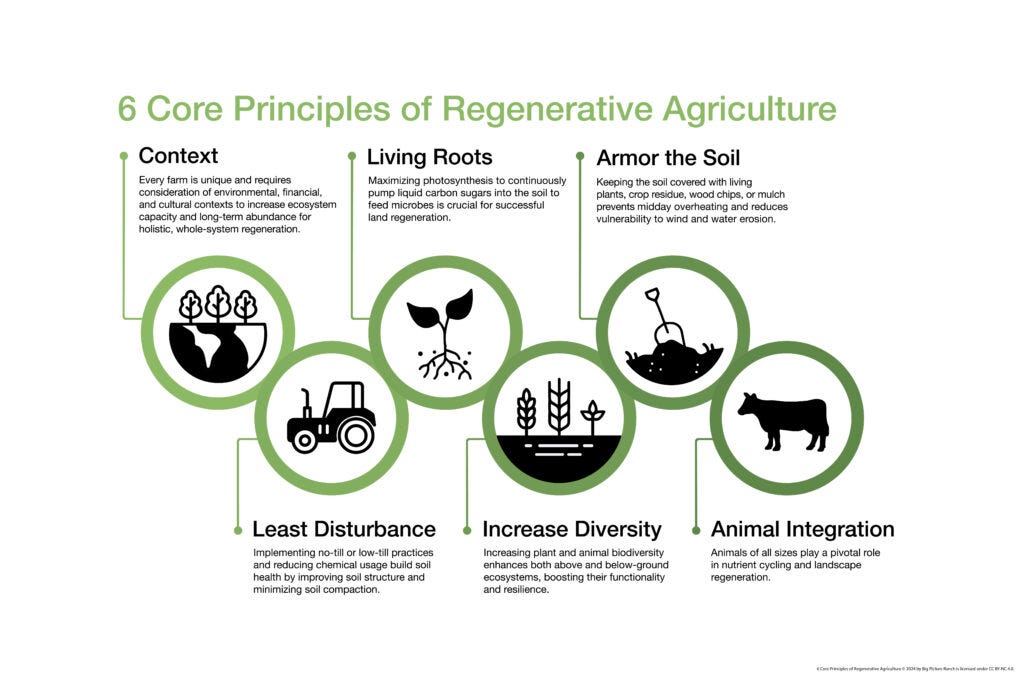When we talk about transforming agriculture in the United States, we’re not just dreaming about a few farms going organic. We’re envisioning a seismic shift—a regenerative revolution. Nearly 900 million acres of U.S. land are devoted to "production agriculture," but this vast system is in crisis. Our soil—the living foundation of food, water, and climate stability—is rapidly degrading.
From drought-stricken wheat fields to yields weakened by pest infestations, the signs are undeniable: poor soil health is undermining the resilience of our food systems. The solution begins where all life begins—at the ground level—with regenerative agriculture.
Regenerative Agriculture: A Ground-Up Solution
Regenerative agriculture is more than a set of techniques. It’s a philosophy that prioritizes soil health, biodiversity, and long-term resilience. When properly implemented, it can turn vast swaths of depleted farmland into living ecosystems—landscapes that store carbon, retain water, and produce more nutritious crops.
Imagine this: 900 million acres of thriving, fertile farmland. Land that feeds us while restoring the Earth. Farms that are both productive and sustainable. This isn’t a distant dream—it’s an achievable future. But to reach it, we need critical mass. We need a tipping point.
The Tipping Point: 100 Million Acres
Social scientists have shown that when 8 to 11 percent of a population embraces a new behavior, the rest will often follow. This is the essence of Malcolm Gladwell’s “The Tipping Point”—a principle backed by research across disciplines. For U.S. agriculture, that means converting just over 10 percent—roughly 100 million acres—to regenerative practices.
The 100 Million Acres initiative is designed to lead us to that threshold. It’s a collective effort that welcomes everyone: farmers, consumers, business leaders, educators, and organizations. Already, about one-third of the goal has been committed to transition. The journey may take years, but the choice to begin is the most powerful step.
How We Reach 100 Million Acres
The path to regeneration is varied and adaptable. At 100MillionAcres.org, participants can explore tailored certifications and resources:
Meat Production
Rotational Grazing protects vegetation and restores soil health.
Animal Health improves naturally, with reduced disease and antibiotic use.
Carbon Sequestration increases as grazing stimulates deep-root growth.
Crop Production
Cover Crops enrich the soil and reduce erosion naturally.
No-Till Practices preserve soil structure and microbial life.
Reduced Chemical Inputs foster a balanced, thriving ecosystem.
Textile Production
Regenerative Cotton Farming minimizes soil depletion and chemical usage.
Healthier Soils yield stronger, more sustainable fibers.
Consumer Demand is rising for sustainable, climate-positive textiles.
From the food we choose to the policies we support, each decision helps push us toward the tipping point.
The Path Forward
The 100 Million Acres initiative is more than a goal—it’s a movement to reshape how we grow food and care for the land. It’s a call to bring regeneration into the mainstream and to secure a future where agriculture is aligned with human and planetary health.
This is our moment to act. To be part of a transformation that will echo across generations. To regenerate not only our land, but our legacy.
Visit 100MillionAcres.org to learn more, join the initiative, and take your place in this vital movement.
One last thing… My latest film, Common Ground, is on Prime right now.






